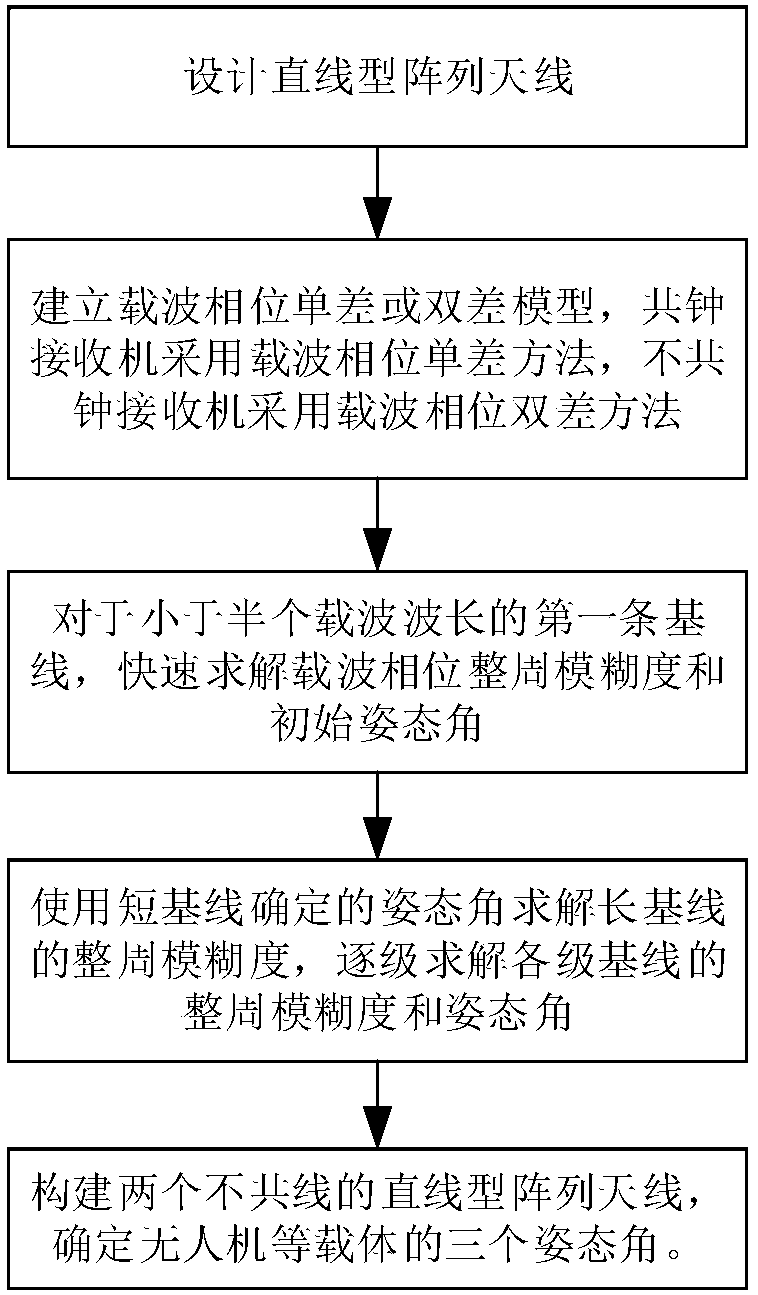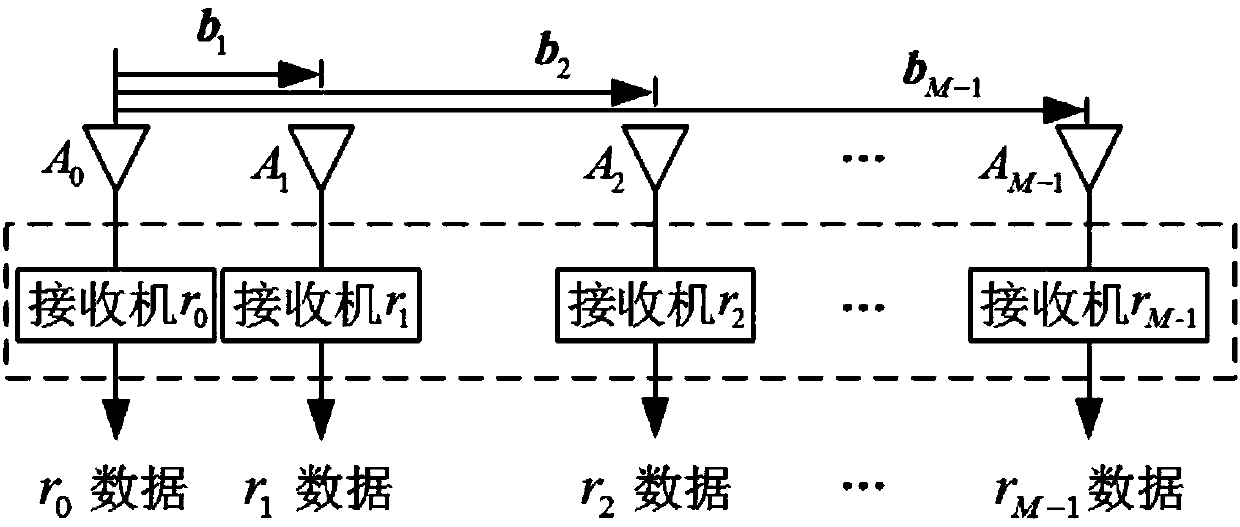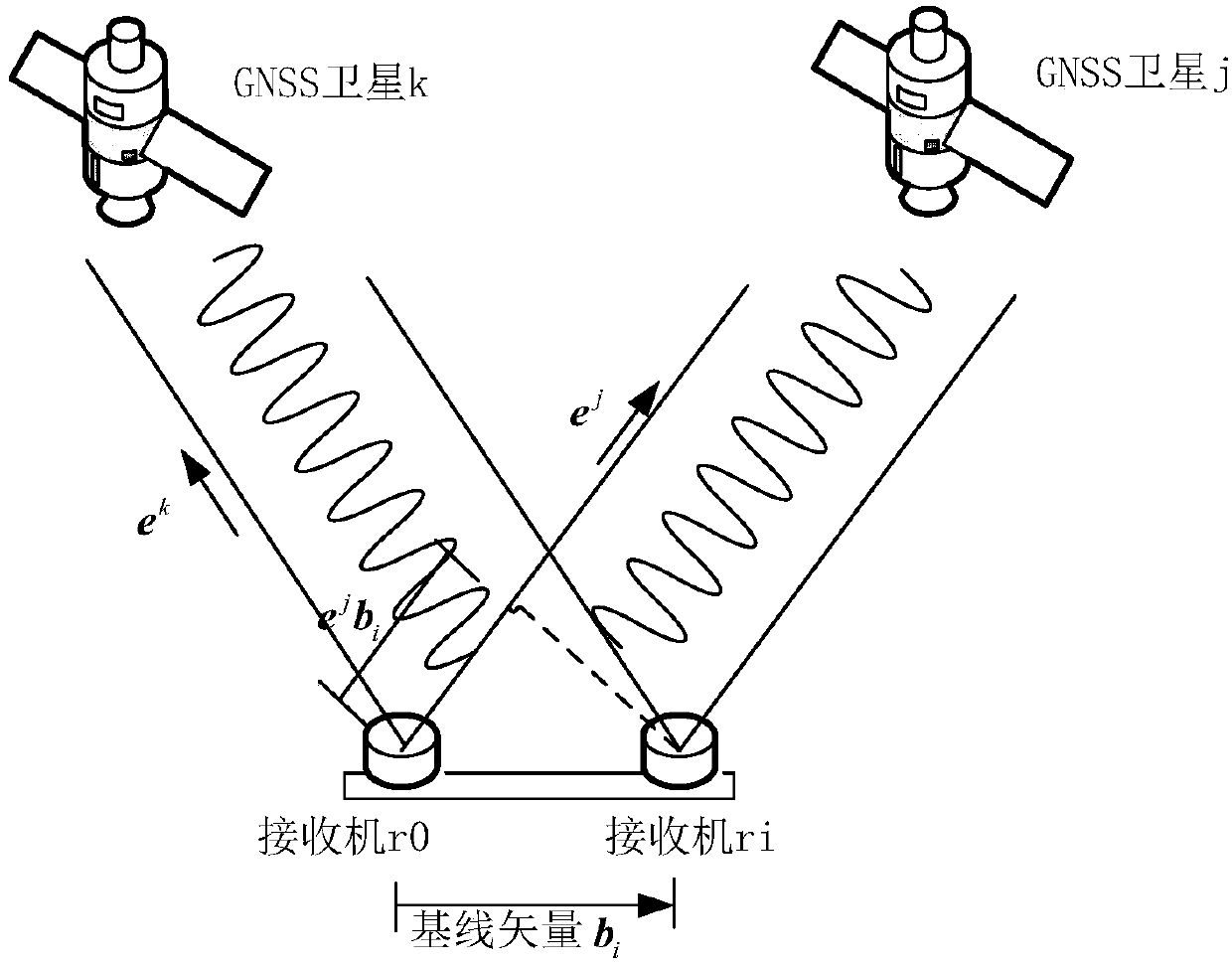Method for solving ambiguity of whole cycles based on array antenna to realize single-frequency attitude measurement
An integer ambiguity, array antenna technology, applied in the field of satellite navigation, can solve problems such as large amount of calculation and large amount of measurement information, and achieve the effect of small size, small computational complexity, and short solution time.
- Summary
- Abstract
- Description
- Claims
- Application Information
AI Technical Summary
Problems solved by technology
Method used
Image
Examples
Embodiment 1
[0049] This embodiment provides a method for solving GNSS integer ambiguity based on an array antenna, which is combined below Figure 1-3 For further explanation of the method:
[0050] The method comprises the steps of:
[0051] Step (1): Design a linear array antenna, and configure the antenna element spacing according to the set rules;
[0052] Wherein, in the linear array antenna, an antenna element located at one end of the array is used as a reference antenna, and the reference antenna and each antenna element in the linear array antenna form an antenna group; the The reference antenna and adjacent antenna elements form a first group of antennas, the distance between the first group of antennas is less than half a carrier wavelength, and the distance between antenna elements in the remaining antenna groups increases sequentially;
[0053] In this embodiment, for a linear antenna array composed of M antenna elements, each antenna element is sequentially denoted as A 0...
PUM
 Login to View More
Login to View More Abstract
Description
Claims
Application Information
 Login to View More
Login to View More - R&D
- Intellectual Property
- Life Sciences
- Materials
- Tech Scout
- Unparalleled Data Quality
- Higher Quality Content
- 60% Fewer Hallucinations
Browse by: Latest US Patents, China's latest patents, Technical Efficacy Thesaurus, Application Domain, Technology Topic, Popular Technical Reports.
© 2025 PatSnap. All rights reserved.Legal|Privacy policy|Modern Slavery Act Transparency Statement|Sitemap|About US| Contact US: help@patsnap.com



